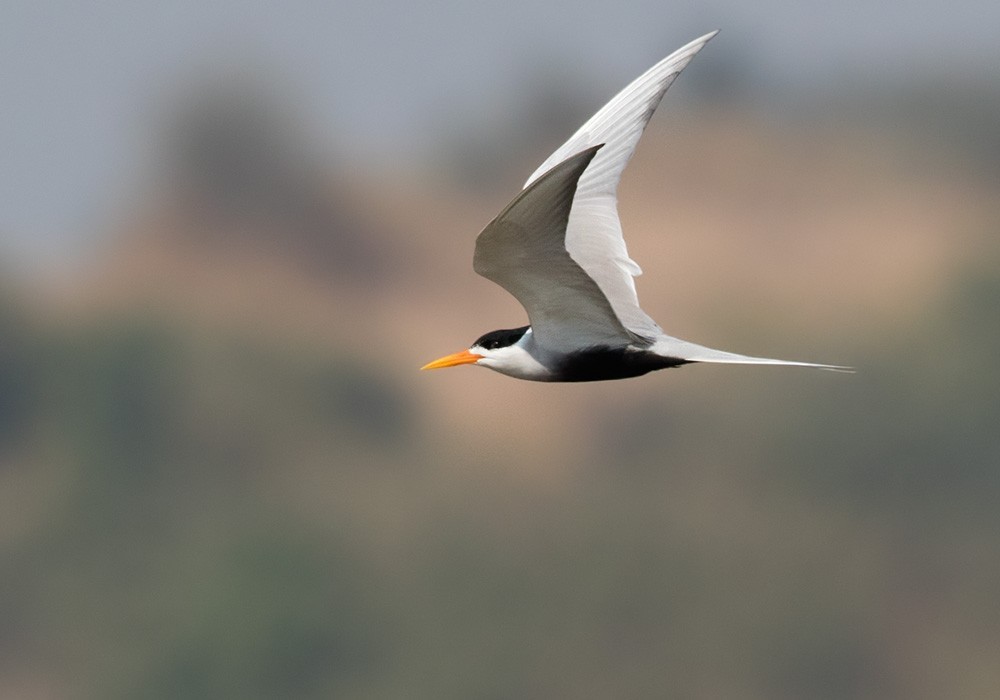Black-bellied Tern
A species of Typical Terns Scientific name : Sterna acuticauda Genus : Typical Terns
Black-bellied Tern, A species of Typical Terns
Botanical name: Sterna acuticauda
Genus: Typical Terns
Content
Description General Info
 Photo By Lars Petersson
Photo By Lars Petersson Description
The black-bellied tern grows to a length of 32 to 35 cm (13 to 14 in). In the breeding plumage, the crown and nape are black and the upper parts are pale grey. The throat is white and the breast pale grey, gradually darkening to a black belly. The wings are long, slender and pointed and the tail is deeply forked with sharply pointed tips. The bill and feet are yellow or orange and the iris is reddish brown. Outside the breeding season, the belly is whitish, the tail is reduced in length and the bill has a dark tip. 
Size
35 cm
Nest Placement
Ground
Feeding Habits
Black-bellied Tern predominantly feeds on insects, such as dragonflies, and small fish. It utilizes plunge-diving for fish and aerial-dipping for insects, both over water and land. Occasionally, black-bellied Tern may feed in flocks, though it breeds solitarily.
Habitat
The black-bellied Tern favors aquatic environments, predominantly residing near inland water bodies such as lakes and rivers. This species thrives in exposed, sparsely vegetated areas like broad flats, sand spits, and sandy riverine islands. It commonly seeks food in and around these freshwater habitats, including riverine zones, lakesides, as well as man-made water bodies like paddies and village ponds.
Dite type
Piscivorous
General Info
Feeding Habits
Bird food type
Distribution Area
The species occurs mostly in Pakistan, Nepal, India and Bangladesh, with a separate range in Myanmar. Its typical habitat is lowland rivers and marshes, and sometimes ditches and pools, at altitudes of up to about 730 m (2,400 ft). It is an entirely inland species and is not found on the coast. 
Species Status
S. acuticauda is classified as being endangered by the International Union for Conservation of Nature. The rationale behind this is that the riverine habitats in which it breeds are under threat in much of southeastern Asia and, although it has an extensive range, it is believed to be extinct in southern China, Nepal, Thailand, Laos, Cambodia and Vietnam. Only in Pakistan, India and Bangladesh are there larger populations, and even in these countries, this bird is thought to be seriously declining, and there may be fewer than one thousand mature individuals in existence. The threats it faces include the degradation of the islands and sandspits on which it breeds, the collection of eggs for food, predation of eggs and chicks by dogs, cats and crows, flooding of nesting sites by the construction of river dams, competition for fish by local fishermen, entanglement in nets, disturbance, extraction of water, sand and gravel dredging and pollution. 

 Photo By Lars Petersson
Photo By Lars Petersson Scientific Classification
Phylum
Chordates Class
Birds Order
Shorebirds Family
Gulls Genus
Typical Terns Species
Black-bellied Tern